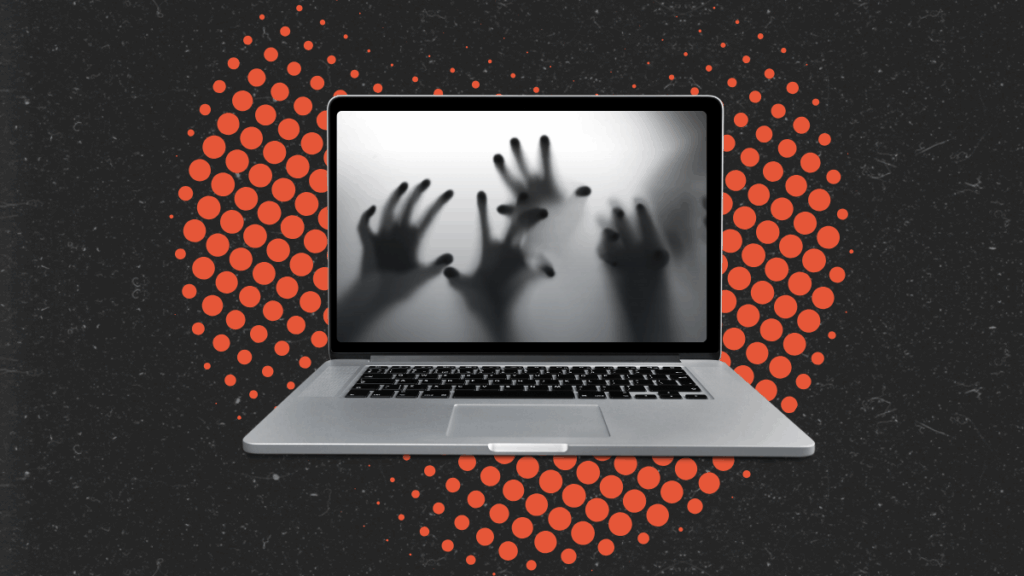
Many of us know all too well that horror stories aren’t limited to the page and screen. They can happen in our lab notebooks, in our coding sessions, in our spreadsheets, and in the eleventh hour of project progress. We asked you to send in your most chilling data horror stories and cautionary tales for our Data Horror Story Contest and you did not disappoint! (See our sequel blog for Even More Data Horror Stories.)
This year’s winning story perfectly captures the dangers of precarious hardware and the panic of unexpected errors.
The Ghost in the Drive
by Spencer Tye
The lab was silent that Friday evening, the hum of incubators like a low chant in a cathedral
of glass and steel. I had just finished capturing a new series of fluorescent images, spectral
shapes glowing in colors that only machines can see. My PI wanted to review them over the
weekend.
He handed me two flash drives: one, new and gleaming, still sealed in its plastic coffin; the
other, a battered relic, its casing cracked, label worn to nothing, the kind of artifact that
survives long after the rituals around it are forgotten. “This one,” he said, “is for the lab’s
archives. Decades of data. Don’t lose it.” The other was for me.
I slid the old drive in first, curious, voyeur to a vault of work older than I. Folders bloomed
across the screen, experiments whose authors had long since left, half-finished theses
calcified into digital amber. A lineage of questions abandoned and passed down. I inserted
the new drive. The machine asked to format it, as all new drives demand, a cleansing. I
clicked “yes,” chose the drive from the list, and walked away.
When I returned, the machine was quiet. The new drive sat untouched. And the old drive,
the one that carried the ghosts of ten thousand hours of pipetting, was empty. The blood
drained from my body in a way no centrifuge could ever match. I asked the others in lab,
voice tight, if our PI ever saved any of this data on a server. Their silence was the silence of
a grave. “No. That’s the only copy.”
For a moment I lived in the horror of it, that my hands had erased decades of human effort,
entire lives of work flickering out in less than a minute. I taught myself data recovery like a
drowning man learns to swim. Byte by byte, clawing fragments back from the abyss. Slowly
the drive exhaled its ghosts, files returning in a chaotic torrent, stripped of their
architecture, scattered into one giant, shapeless folder.
The worst moment was not the formatting, not the panic, not the hours of recovery. It was
standing in front of my PI and confessing. “I deleted everything. I recovered it all, but it’s a
mess now, all in one giant folder.” His face held the weight of both relief and dread. He
didn’t raise his voice. He didn’t need to. His silence spread through the room like frost. The
stillness of his face said more than fury ever could. The files survived, but their order was
gone. A cathedral of memory reduced to rubble. Still, I saved the bones.
I have never forgotten that night. That data was never just files. It was trust, belief, the
invisible scaffolding of science. And I had nearly lost it all with a single careless click. The
machine had asked: “Are you sure?” I will spend the rest of my career hearing that
question, whispered like a curse.